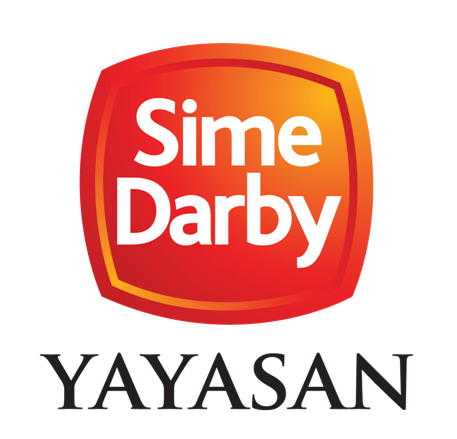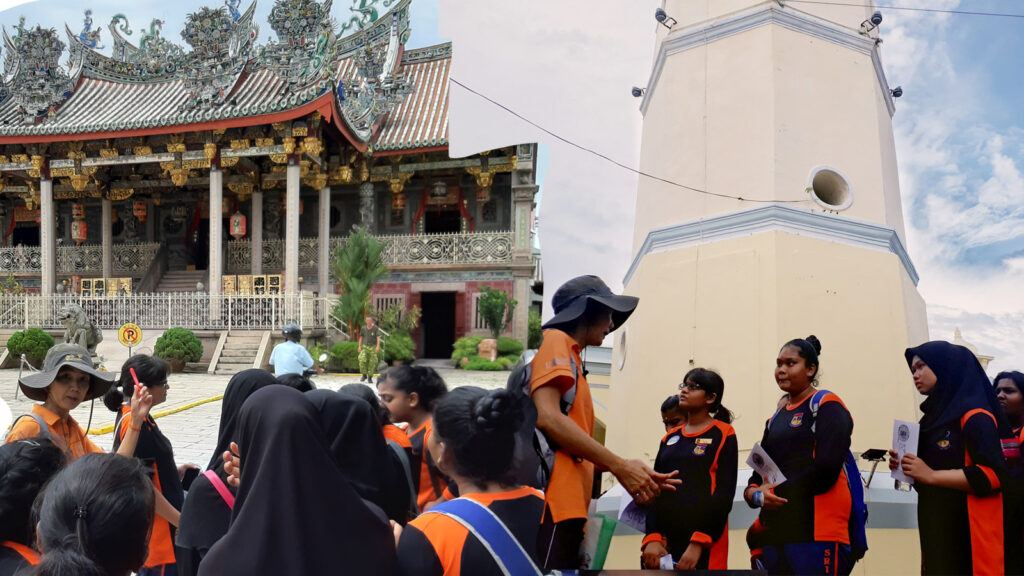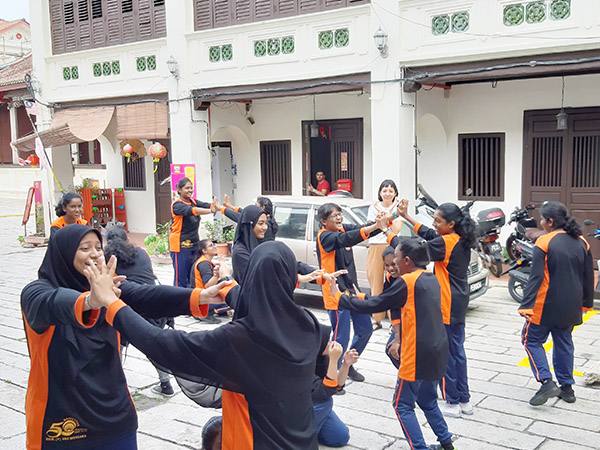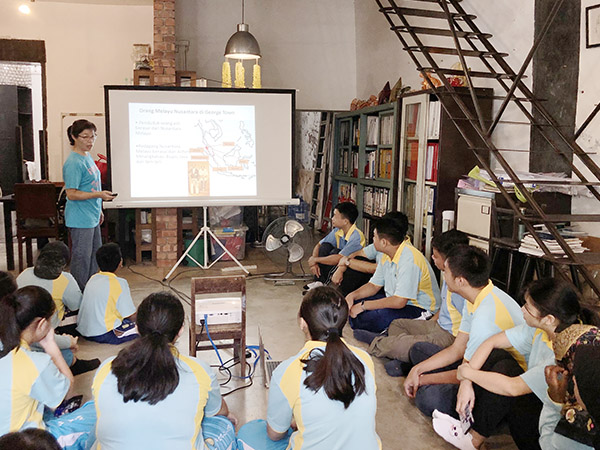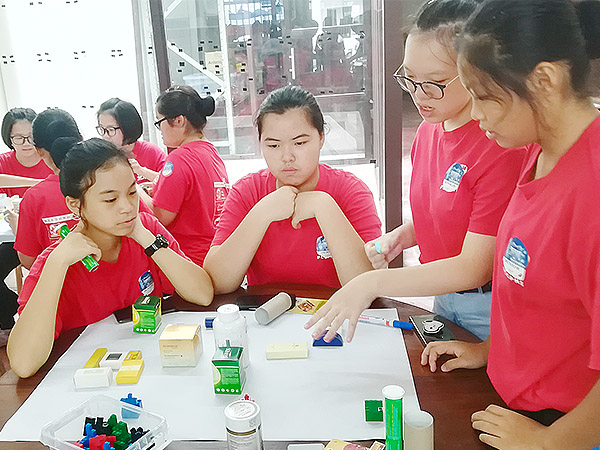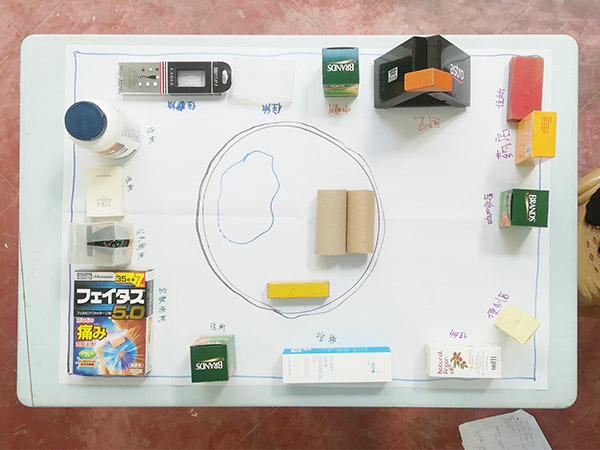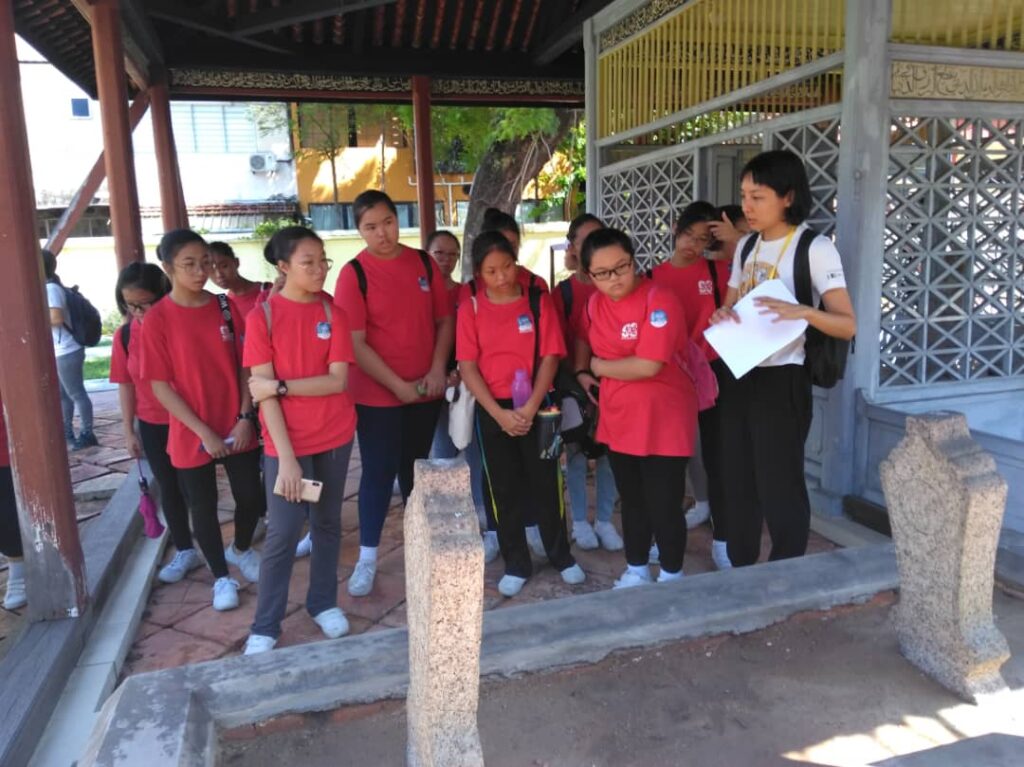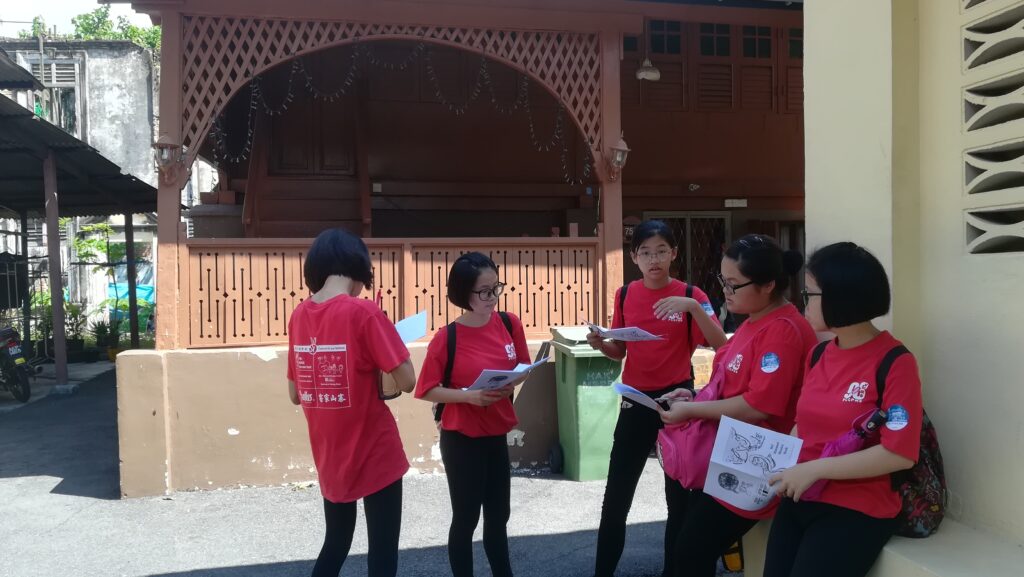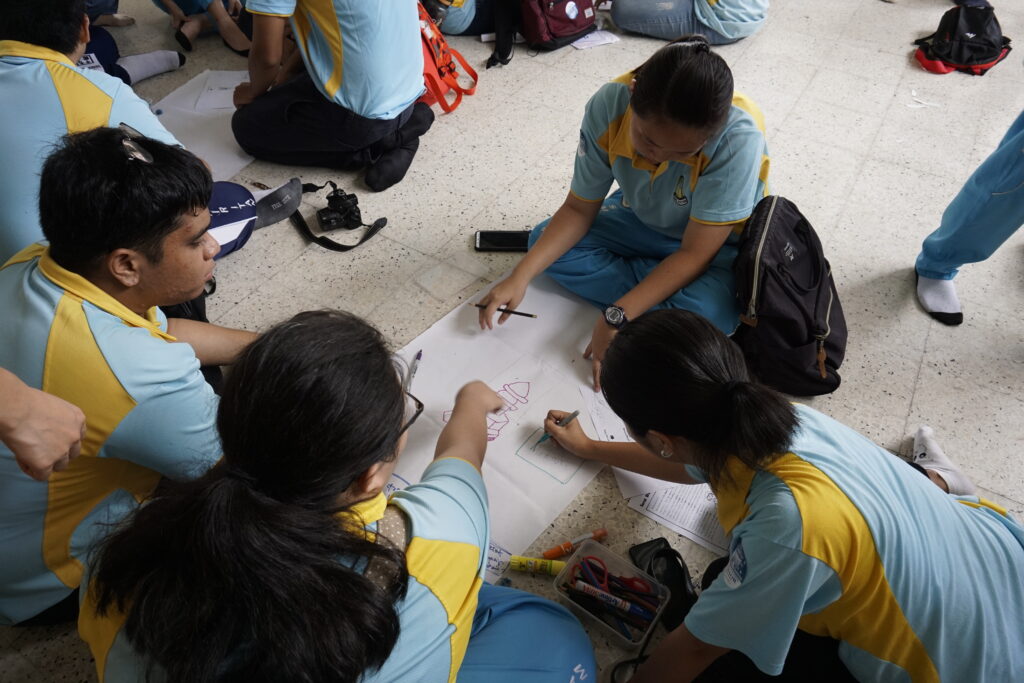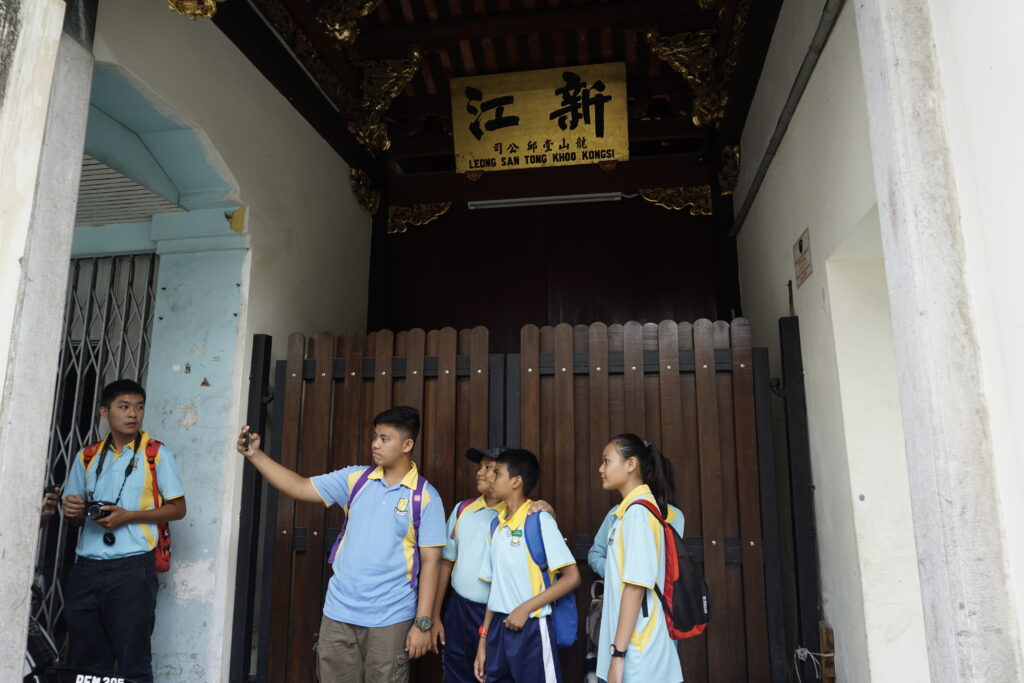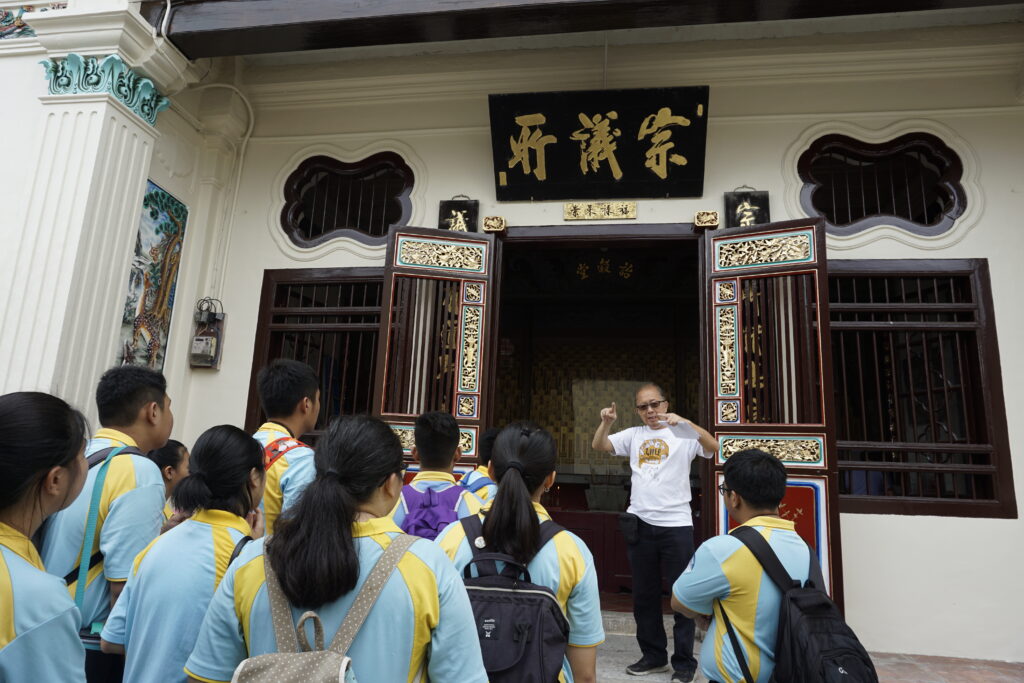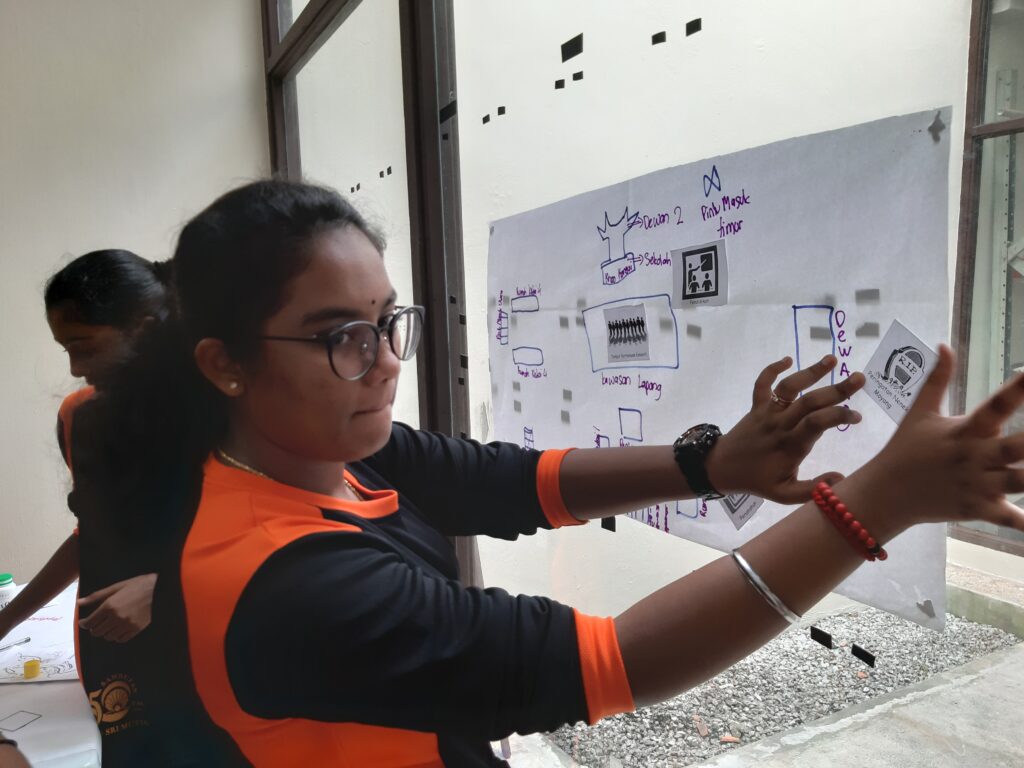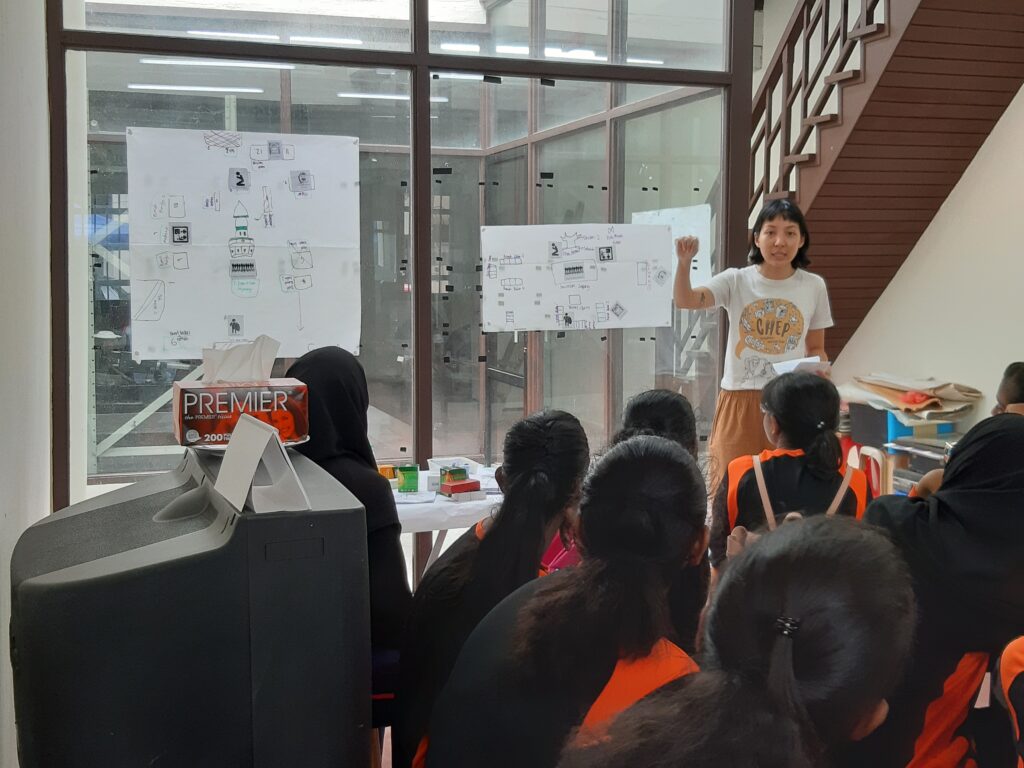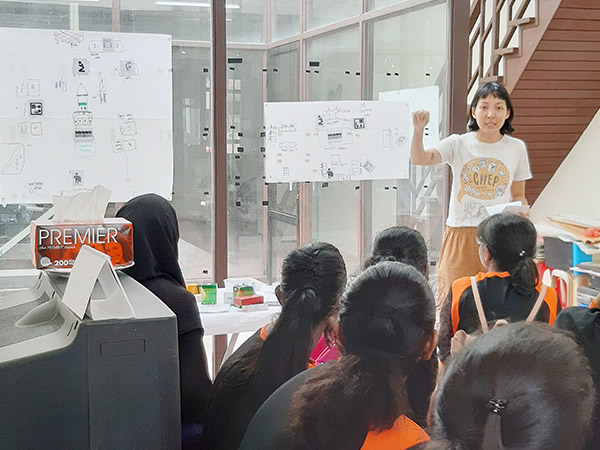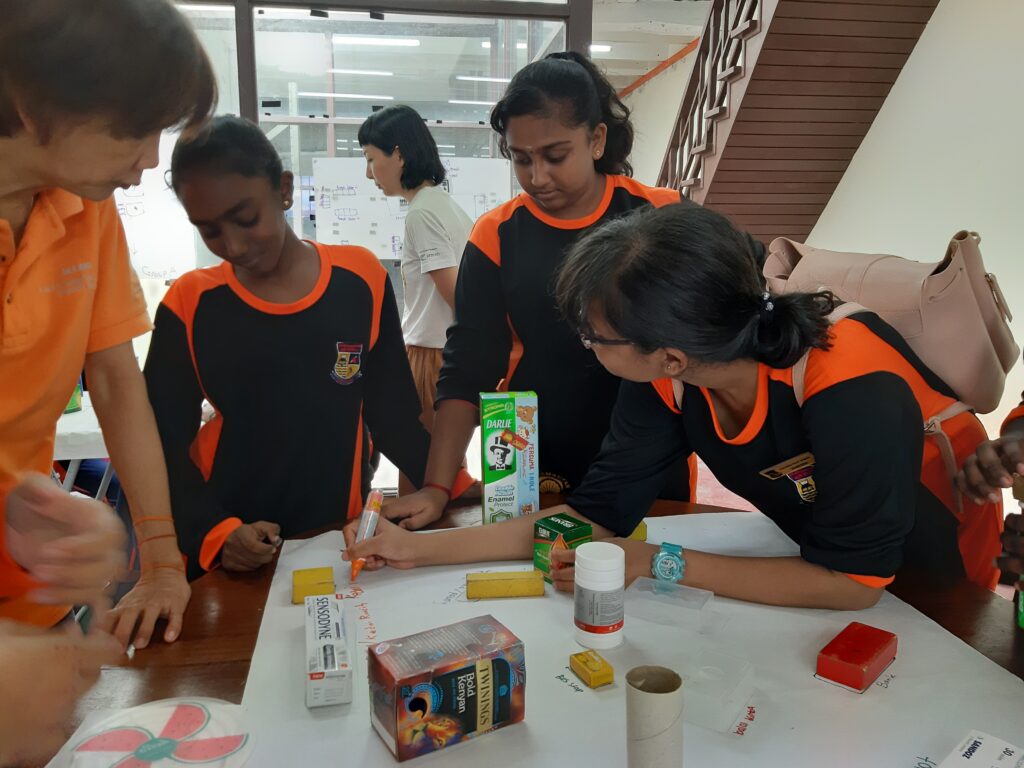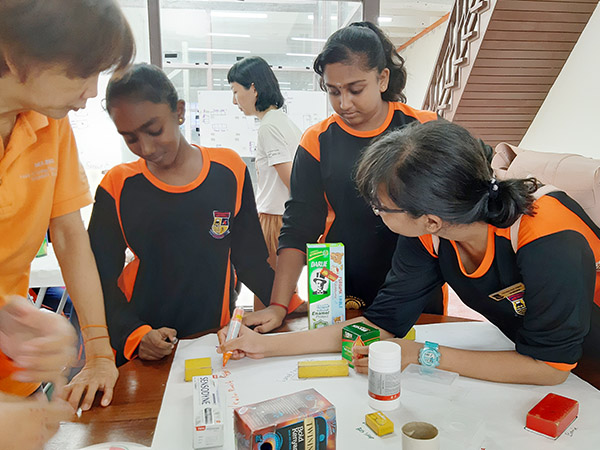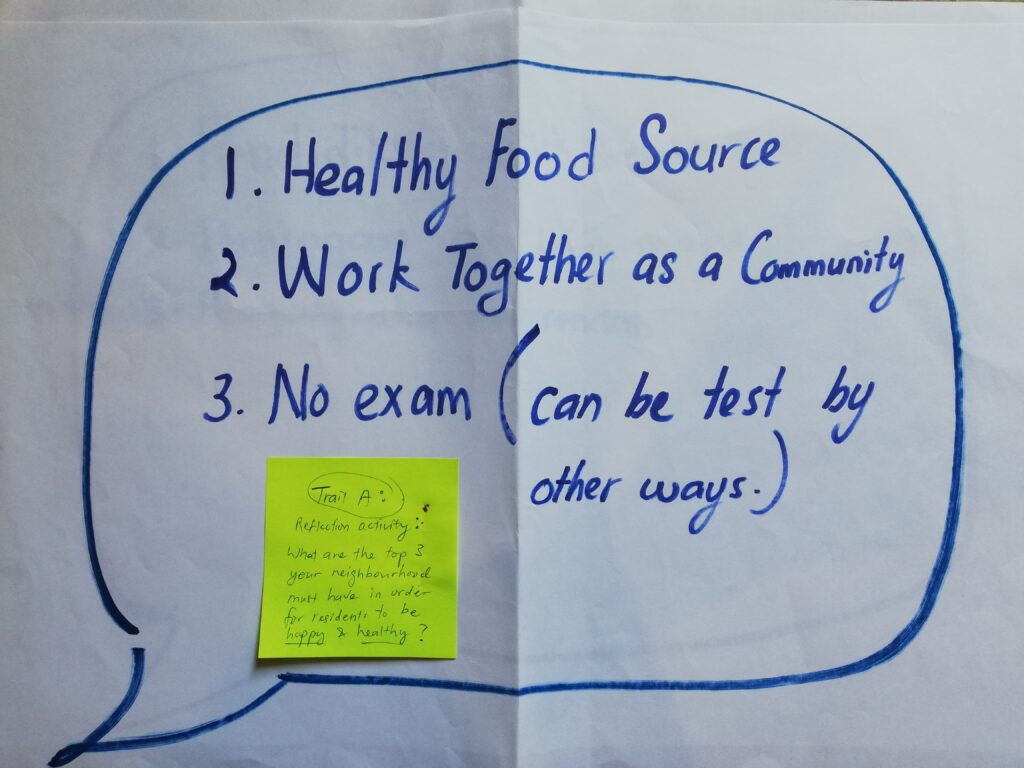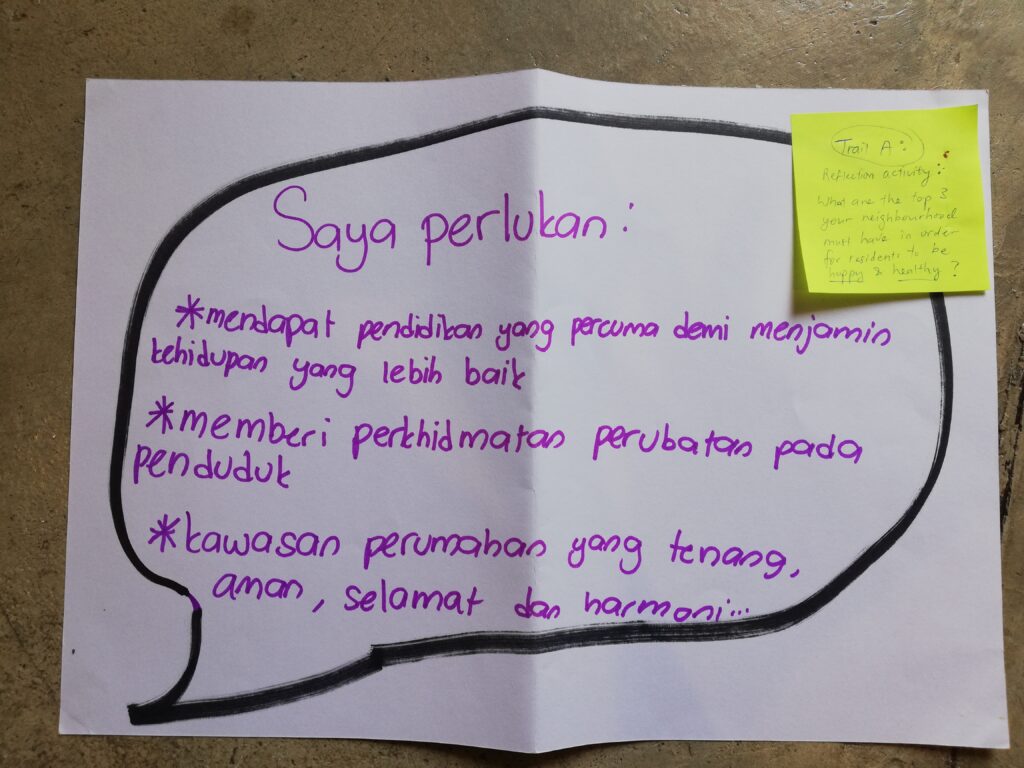Communal Living in The Early Settlements
What does it mean to build a well-balanced, healthy, and sustainable community? Participants explore two early settlements in George Town, the Acehnese settlement and Khoo Kongsi, through an interactive guided walk and hands-on activities.
Project at a Glance
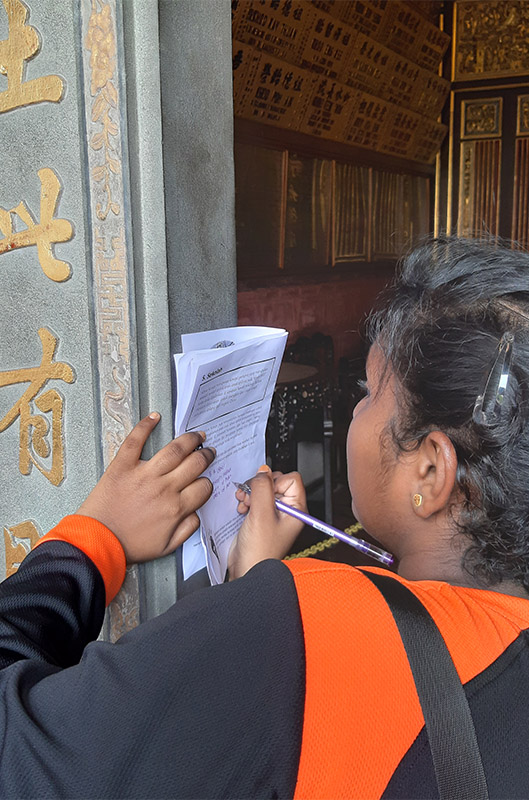
Driving Questions
What does it take to build a well-balanced and sustainable community?
Creative Medium
Interactive and experiential walk
Community
Acehnese settlement and Khoo Kongsi, George Town, Penang
Participants
13–15 year olds
Human Resources
A tour guide or someone who has cultural knowledge of the historical settlements, a facilitator
Timeframe
6 hours
Relevant Subjects
History, Geography, Languages

Knowledge
- Understand how the early Chinese and Malay settlements were built based on their needs and traditions.
- Compare similarities and differences between the early Chinese and Malay settlements.
- Develop a better idea of what they want for their future township environment.

Skill
- Interview and interact with the Chinese and Malay communities to extract stories from them.
- Draw and label maps of two early settlements.

Value
- Appreciate the need for a built environment catering towards a well-balanced community.
- Respect each other and share opinions during group activities.
Suggested Activities:
- Share key lessons from the interactive walk with peers (in school), friends, and family.
- Document experiences and insights from the interactive walk and related activities and share them within the community through an exhibition to inspire others that historical legacies are important for the present communities.
Context and Citizenship
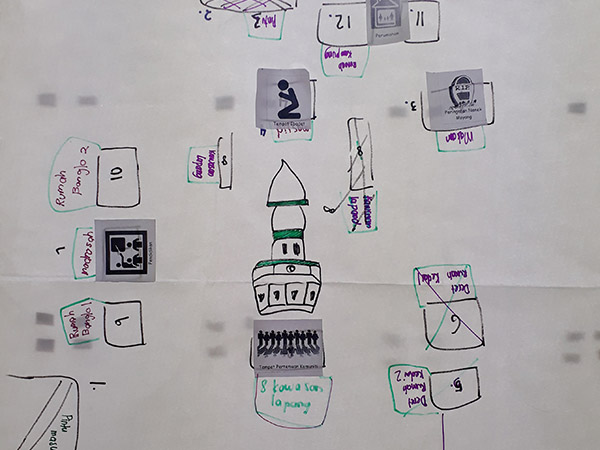
The Acehnese settlement and Khoo Kongsi are part of the multicultural legacies of the Malay and Chinese settlements in the George Town World Heritage Site. They were established by populations of different backgrounds and beliefs, demonstrating the power of collaboration, compromise, and mutual respect.
Comparing the Acehnese settlement and Khoo Kongsi, we see how different cultures have coexisted to create a vibrant and diverse community. The Acehnese settlement symbolises the lively Malay culture predominant in the original Malay settlement. It stands as a testament to the cultural and religious heritage of the Malay people and serves as a community centre where Muslims gather and make arrangements for their pilgrimage to Mecca. Friday prayers are currently held at Lebuh Aceh Mosque. In contrast, Khoo Kongsi is a Chinese clan house that reflects the long-standing Chinese presence in George Town, adapting their cultural values and beliefs. It once functioned as a community centre where clansmen sought help in general or administrative matters, conducted prayers, and gave financial contributions and investments. Its function remains the same today.
The Acehnese settlement and Khoo Kongsi are the foundations for building a well-balanced and sustainable community. Understanding the values and compromises that allowed these sites to coexist peacefully is crucial, not only from a practical standpoint but also from a cultural and identity-based perspective. We can use this knowledge to build a community that celebrates identity and diversity while nurturing mutual respect and understanding.
Components of Learning
Activity 1 - Warm-up Game and Set Induction
Participants played the Squirrels Game to understand how the environment or circumstance affects behaviour. This game served as a warm-up and also introduced participants to the ideas of collaboration, protection, and community which are central to the programme.
Activity 2 - Introduction to Early Settlements
Participants learned about how trade winds made George Town a strategic port and the early migrants that settled in George Town, their countries of origin, and their trades and occupations.
Although there were several early settlements in George Town, participants focused on only two settlements of Malay and Chinese migrants. As part of introducing the context, the facilitator prompted participants to put themselves in the shoes of a migrant and imagine what they would need upon arrival in a strange new place.
Activity 3 - Town Planning Exercise
Different people need different things to live happily and healthily: what does your ideal town look like? Participants worked in groups to design an ideal town they’d like to live in using a large sheet of paper, various objects as building blocks, and labels.
The criteria for the town are:
- it must provide for 200 people, and
- the residents are diverse in age and some may have disabilities.
Each group shared their 3D town plans. They were asked to keep these plans in mind as they ventured out to the two settlements to see how people used to live.
Activity 4 - Acehnese settlement Site Exploration
After identifying Aceh on the world map, participants went on a guided tour around the Acehnese settlement which has the Lebuh Aceh Mosque at its centre. They discovered why the Acehnese came to Malaya and the early history of the Acehnese settlement founder, Tengku Syed Hussein Idid. They also learned about key buildings within the mosque compound including the courtyard, madrasah, traditional houses, and the cemetery; their functions; and the early role of the mosque as a gathering point for pilgrims on their way to Mecca.
At the end of the tour, participants were given a Mission Book, which they used to further explore the Acehnese settlement and complete tasks in groups.
As the final task, each group of participants discussed and drew a map of the Acehnese settlement and labelled the key buildings. The groups shared their maps with each other, what they found interesting about the settlement, and what they would like to include in their town design.

Listening to the story of the tombstone of the Acehnese settlement founder. 
The guide highlighting other buildings in the compound, including the madrasah which is painted in blue. 
Completing their Mission Book. 
Drawing a map of the Acehnese settlement. 
Sample map of the Acehnese settlement drawn by participants.
Activity 5 - Khoo Kongsi Site Exploration
Before heading inside Khoo Kongsi, participants located where the Hokkiens came from on the world map. Then, the guide explained why the Hokkiens came to George Town and the role of the Kongsi in the mid-19th century as a community centre for fellow migrants who came from the same clan in China.
The exploration of Khoo Kongsi was carried out as an interactive activity based on historical events where the participants took on the role of “Khoo clan members” who had just arrived in George Town. Firstly, they were tasked to go around the perimeter of Khoo Kongsi, locate all its entrances, and enter from the main entrance to look for their “supervisor” (role-played by the guide or facilitator).
The “supervisor” assigned a membership number to each newly arrived “Khoo clan member” and took them on a guided tour of the compound. The “supervisor” highlighted key buildings such as the shophouses where the members will live, the ancestral tablets, the temple building, the school, the courtyard and opera stage, as well as the multiple entrances which exist due to security reasons.
After the tour, the “Khoo clan members” were each handed a Kongsi Membership Book which contained tasks they had to complete to confirm their membership. Following the tasks in the Membership Book, the “Khoo clan members” explored the compound on their own, observed certain details, and interviewed community members there.
Like at the Acehnese settlement, participants discussed and drew a map of Khoo Kongsi and labelled the key buildings as their final task. Participants also noted what they would like to include from Khoo Kongsi in their new town design.

Taking a photo in front of one of the entrances to complete their task. 
“Supervisor” explaining about the ancestral remembrance hall. 
Finishing tasks in their Membership Book. 
Interviewing a fellow resident in the compound. 
Creating a map of Khoo Kongsi using cutouts of key places given by the facilitator. 
Sample map of Khoo Kongsi drawn by participants.
Activity 6 - Acehnese settlement and Khoo Kongsi Comparison
Participants looked at the two maps they had drawn of the Acehnese settlement and Khoo Kongsi and discussed the similarities and differences between the two communities. They realised the need for communal living and human connectedness when migrating to a new country.
Activity 7 - Town Planning Review
Participants reviewed their previous town plans and revised their town designs based on their experience in the Acehnese settlement and Khoo Kongsi. Participants then presented their town plans and changes made and received feedback. This activity allowed participants to connect the situation and needs of early settlers for happy and healthy living with that of present-day dwellers.
Activity 8 - Reflection on Happy and Healthy Community
Activity 9 - School Presentation and Sharing
Although this activity was not carried out in the original project, educators are encouraged to do so to reinforce participants’ learning.
With the drawn maps, participants can share their findings about the two settlements, how they aimed to keep their communities happy and healthy, and their own town plans with others at their educational institutions. Their peers can even vote for their favourite town plan, generating discussions about the meaning of happy and healthy communities in the school.
How to Adapt

Community
What are some settlements around you that have tangible and intangible cultural assets for participants to explore different approaches to building a happy and healthy community?
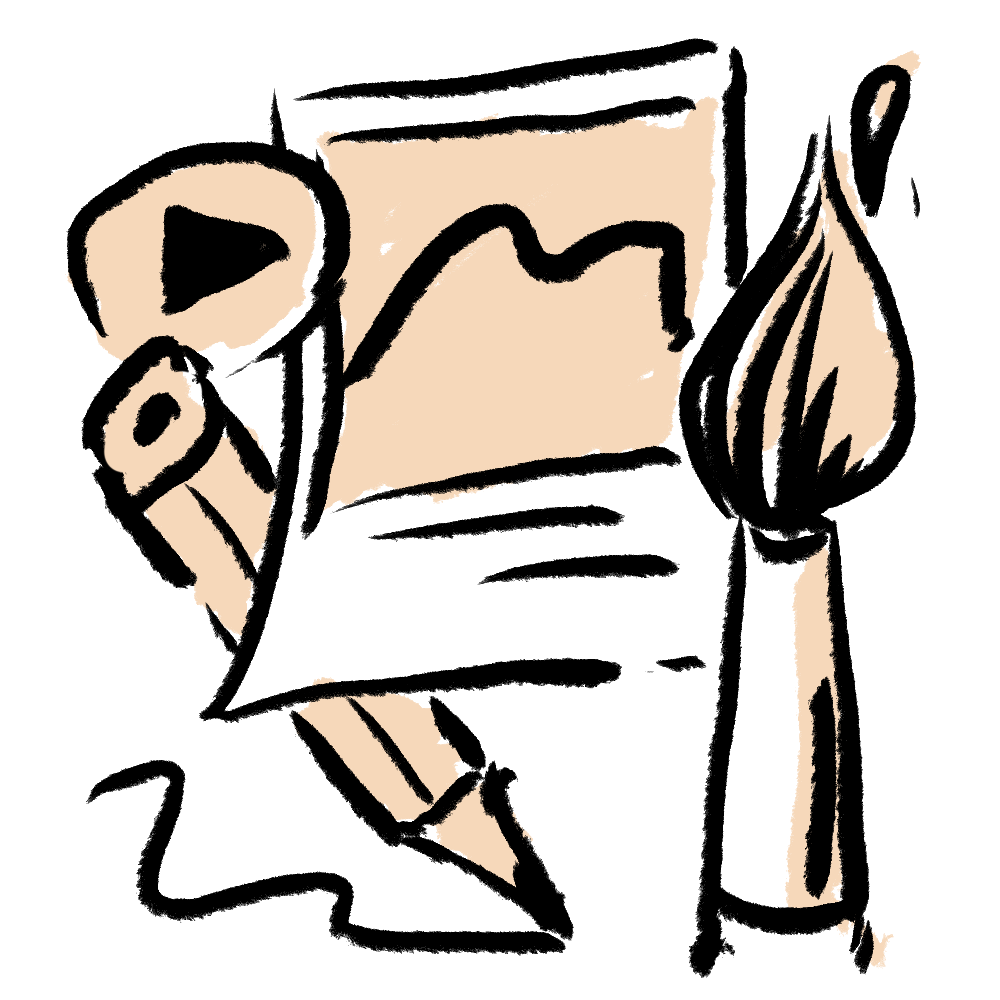
Creative Medium
Other than the guided tour and task booklets, how can participants engage more deeply with the settlements? Consider inviting local community members to share stories from their time living in the settlement and even vote on the participants’ town plans.

Topic
What are some ways to deepen the participants’ learning? Consider conducting sessions before and/or after this programme to facilitate participants to connect their experiences in the early settlements to the neighbourhood where your school is located or their own neighbourhood.
Originally conducted in Anak-Anak Kota and Cultural Heritage Education Programme (CHEP).
